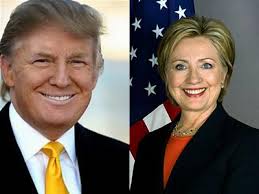|
The economic system the Founding Fathers created allowed individuals from all economic levels to aspire to and achieve incredible success. Slavery is the exception to this. Because of slavery, most technological advancements did not originate from the slave culture in the South. The South’s medieval society stunted technological and economic advancement. However, the North was another story. At no other time in the history of man did one society invent and develop so many new ways of doing things that benefitted the general public. Many of America’s most successful industrialists were born in this time period, including Andrew Carnegie (1835), J.P. Morgan (1837), John D. Rockefeller (1839), and Levi Strauss (1829). Most came from the poorest of backgrounds and were able to capitalize on the American environment of small government supported by laws that did not favor one group over another. The greatest inventions and economic development occurred in the free North. The South, with its slave culture, repressed Americans who were hard-working, thrifty, and creative.
Inventors created new products which improved the lives of all humans, and businessmen created systems that brought these products to average people, but the great majority of inventors in America were from the North. The 1800s in America was a time of amazing technological breakthrough and rapid economic expansion. Because of the abundant land, scarce labor, and limited government, Americans were always thinking of better ways to work in agriculture. Along with new inventions, Americans also created a business climate which protected property rights and intellectual rights. These protections emboldened inventors to create. The following is just a small list of Americans who invented or developed processes in the 1800s that made many of life’s tasks easier and thus raised the standard of living for the average American:
These inventors and business developers were either northerners or westerners, or they moved to the North to further their business interests. The first half of the 1800s was known as the “Canal Era.” Perhaps the most important canal built in America was the Erie Canal. The Erie Canal connected the Great Lakes area to the Hudson River, which emptied into the Atlantic Ocean via New York City. This canal was 40 feet wide, 4 feet deep, and 363 miles long. The Erie Canal made New York City the business capital of the country.
0 Comments
By John De Gree
Besides Donald Trump and Hillary Clinton, two other candidates are running for the President of the United States of America: Libertarian Party candidate Gary Johnson and Green Party candidate Jill Stein. The tax policies of these candidates reflect their political philosophies. According to Johnson’s website, “For far too long, tax laws have been used not just as a means to collect needed revenues, but as a way for special interests to penalize their competitors while subsidizing themselves.” Gary Johnson believes that the U.S. tax policy helps those powerful enough to manipulate it, and hurts the average American. Johnson proposes to eliminate all tax loopholes, all income taxes and payroll taxes and replace it with a single consumption tax. A consumption tax is a tax on what you purchase. Johnson thinks this would save Americans a great deal of time, that it is fair because it treats all people the same, and that it would encourage the American economy to grow. According to Stein’s website, “My Power to the People Plan creates deep system change, moving from the greed and exploitation of corporate capitalism to a human-centered economy that puts people, planet and peace over profit.” Stein does not have an explicit tax policy, but rather goals that are related to taxes. She wants to “increase government revenues, restore full employment, cut the dangerous military budget, rewrite the entire tax code to be truly progressive with tax cuts for working families, the poor and middle class, and higher taxes for the richest Americans.” Libertarian candidate Gary Johnson and Green candidate Jill Stein have extremely different political philosophies. Johnson wants to have a minimal government that treats all individuals the same, regardless of their economic position. Stein wants to have a large government that treats individuals differently depending on their economic position. Johnson wants to tax everyone the same percentage of what they purchase. Stein wants to tax those she calls rich and she wants to provide tax cuts for everyone else, though she does not specify what amount of income or worth means someone is rich. This November, American will choose their President, and one of the variables Americans will decide will be on the tax policies of the various candidates. Johnson’s and Stein’s tax policies are very different from each other. Questions 1. What is Johnson's party and what is his tax plan? 2. What is Stein's party and what is her tax plan? 3. What does Johnson's tax plan tell you about his political philosophy? 4. What does Stein's tax plan tell you about her political philosophy? 5. Which tax policy do you think would make America stronger? On Tuesday, November 8th, Americans will have the opportunity to vote for the next President of the United States of America. There are a number of candidates, but the two main ones are Republican Donald Trump and Democrat Hillary Clinton. Each offers a different tax plan for the country. One candidate favors individuals and businesses keeping more of the money they earn and the other candidate favors raising taxes on individuals and businesses. One candidate believes that individuals and businesses make better decisions with their own money and another candidate believes that when a person makes a great deal of money, the government will make better decisions what to do with the money.
Presidential candidate Hillary Clinton plans to raise taxes on individual and business income. Clinton wants to raise taxes to limit tax deductions and to place an extra 4% tax on individuals with incomes over $5 million. This would raise the marginal tax rate on those earning more than $5 million to 43.6%. Clinton wants to enact a minimum 30% minimum tax on individuals. She would like to have the estate tax rise to 45%. The estate tax is tax on a person’s estate after he dies. Clinton would like to raise the top tax on investments (long-term capital gains) to 47.4%. Presidential candidate Trump plans to lower taxes on individuals and businesses. Trump plans to get rid of the current tax brackets and replace them with three rates: 12%, 25%, and 33%. (Currently, tax rates are 10%, 15%, 25%, 28%, 33%, 35%, and 39.6%. The more a person makes, the higher his tax rate is.) Trump wants to eliminate the investment income surtax. This means he wants investors to not be taxed extra for investing. Trump wants to lower the top corporate tax rate from 39% to 15%. Trump wants to eliminate the estate tax, so that when a person dies, all of his wealth transfers to his family tax free. The tax plans of the two Presidential candidates and their respective political parties greatly differ from each other. The Republicans and candidate Trump think that lower taxes will allow Americans to keep more of what they make. They think that individuals and businesses will then spend and hire more, and that this would improve the economy. The Democrats and candidate Clinton think that higher taxes will make the wealthier pay more to the government, and the government will be able to take that money and invest it wisely. They think that government leaders will make decisions that improve the lives of Americans. Great Discussion Questions to Ask Your Kids
By John De Gree, of The Classical Historian
In a rare event in American political history, a self-proclaimed Socialist is one of the major candidates for the U.S. Presidency. Socialist Senator Bernie Sanders (Vermont) has competed very well against Senator Hillary Clinton (New York) for the Democratic nomination for the President. Many Americans do not know what is a Socialist. Socialists believe that society functions best when members are forced to share economic goods. This means, for example, that if someone earns $100,000 and another earns $10,000 a year, both should enjoy the $110,000. Socialists think it is unfair that one person should benefit more than another because of his ability, effort, or circumstances in life. Socialists think that the government should determine how much money a person is allowed to keep and how much he should give to others. Some socialists think all people should have the same income, where other socialists think some people can earn more than others. But all socialists agree that the government should determine a minimum amount that each person in society should earn, regardless of his situation. A socialist thinks that it is the role of government to make decisions regarding private property. For example, if a family has 10 children the socialist thinks that the government should make sure the larger-sized family has a large enough house for the bigger family. This could mean that taxes from the family with 2 children will go to the family with 10 children to support them. A socialist thinks that the individual rights of the citizen come second to the needs of the state, and it is the role of the government to determine what are the needs of the state. We have many examples in history over the last 200 years to help us understand what a socialist state may decide is the need of the state. In the Union of Soviet Socialist Republics (U.S.S.R.) in the 1900s, the government decided that religion was an enemy of the people. The U.S.S.R. forbade religious practice and tortured and murdered millions of people to enforce the ban on religious practice. Because of the tragic consequences of the U.S.S.R., many Americans fear socialism. Senator Sanders describes his political philosophy as democratic socialism. Sanders does not want government to take away others’ property or severely limit individual’s rights, but he would like government to heavily tax those who are successful, and he wants government to distribute this money evenly. Unlike in the U.S.S.R., where people were forced to follow the government or die, Sanders wants people in the U.S.A. to vote and choose a government that will raise taxes. Sanders thinks that the amount of money in a society is fixed, and it is the government’s job to distribute it evenly among all. Great Questions You Can Ask Your Kids 1. Who is Bernie Sanders? 2. What is a socialist? 3. What happened in the U.S.S.R. in the 1900s? 4. What is democratic socialism? 5. What do you think of socialism? By John De Gree of www.classicalhistorian.com Copyright 2016. All Rights Reserved. #theclassicalhistorian In 2016, Americans will choose candidates to represent the Democrat and Republican parties, and these two candidates will compete against each other in the general election in November. Each candidate has a tax policy that reflects their philosophy and ideas. To understand how tax policies impact a country’s economy, it is helpful to look at the actions and results of past Presidents.
The 2016 Democrat Candidates and Taxes The two main Presidential candidates for the Democrats are Senator Bernie Sanders and former Secretary of State Hillary Clinton. Both candidates favor raising taxes, especially on those Americans who earn higher incomes. Bernie Sanders has called for a top marginal income tax rate of 90% and to increase the death tax so that “Trump and his billionaire friends and their families will end up paying more.” Marginal tax rate means the rate on the next dollar that is earned. The death tax is paid by a person’s estate when they die. This means, there is a tax on dying. The 2016 Republican Candidates and Taxes There are many Republican candidates, but the top in polling seem to be Donald Trump, Senator Ted Cruz, Senator Marco Rubio, Ben Carson, former governor Jeb Bush, governor Kasich and governor Christie. Each has their own tax plan, but they all intend to cut income taxes and business taxes from their current rates. One of the biggest tax cuts appear to be from candidate Ben Carson, who favors a 14.9% flat tax on income, and a reduction to “0” of all capital gains tax. Goals of Taxation One of the most recognized goals of taxation is to raise revenue to pay for government programs. The U.S. government supplies an army and runs social welfare programs like Social Security and Medicare. Some argue that it is unfair that others make more money than some, and thus, some politicians see taxation as a way to make people’s income the same. Taxes, Presidents, and History There may be differences of opinion on tax cuts and how they affect the government, but there is only one history. Since 1962, we have three instances in history where the U.S. government has drastically cut taxes. President John F. Kennedy cut the top tax rate from 90% to 71% in 1962. In the 1980s, President Ronald Reagan cut the top tax rate from 70% to 50% in 1981, and then in 1986, he dropped the top tax rate to 28%. In the 2000s, President Bush cut income taxes from a high of 39.6% to 35%. In each of these largest tax cuts in the past 60 years during each President’s terms, revenue to the U.S. government grew, individual income grew, unemployment fell, and the gross domestic product grew over 3.5%. What appears to have happened is that because individuals were allowed to keep more of their money, they invested it into businesses or spent more on consumer goods. This seems to have increased the overall growth of the economy. President Obama and Taxes In the last 7 years, President Obama has raised taxes many times, including 22 different taxes including in the Affordable Care Act (ObamaCare). During his presidency, revenue to the U.S. government has grown, however, individual income has fallen, the number of people unemployed has grown to 92.5 million people, and gross domestic product has grown at a 2% rate. While there are other factors affecting the economy, tax policy is one of the most consequential. Questions
Last week, we traced part of the history of the beginning of capitalism and how it played a role in Europe and the United States in different time periods. One idea of capitalism is best understood as “laissez-faire.” This is a French term meaning the absence of government getting involved in economic affairs. The idea is that individuals will better make decisions for themselves and their families than someone in government. At the end of the Medieval Ages and the beginning of the Early Modern Ages, many European kingdoms followed the economic policy of mercantilism. Mercantilism is very different than capitalism. Under mercantilism, kings established colonies to acquire gold and natural resources. Colonies existed to enrich the kings and the mother country. Because mercantilism always favored the kings at the expense of the colonies, colonists eventually demanded freedom.
In the 1600s and 1700s, there are many examples of mercantilism. Led by the “Sun King” Louis XIV, France established her empire in North America. Spain had already built a huge empire in the 1500s, conquering most of South America and large parts of North America. The 1600s was known as the “Golden Age of Spain” in part because of all the gold Spain took from the Incas and the Aztecs. Great Britain had colonies all around the globe, in North America, South America, and Asia. The Dutch and the Portuguese also had colonies. Each colonial power sought to reap benefits of having cheap raw materials to take back to the home country. And, each kingdom had economic control over its colonists, making laws that restricted the economic freedoms of the colonists. This means that the central government, not the individuals, controlled the colonists. The American Revolution (1775-1783) was the first of many where colonists overthrew the royal powers and established republics with much greater economic freedom. After founding a republic in 1776, the United States of America implemented a laissez –faire economy, and individual Americans had great freedom over their economic decisions. The U.S.A. was an experiment for capitalism. This freedom over their economic lives continued at least until 1913, when the United States passed the 16th amendment, which allowed for federal taxation of income. In the 1800s, America was the immigration destination for most of the world. In 1776, the United States of America was the newest county in the world, with no navy and no standing army. By the time of World War I, the country was perhaps the mightiest. Economic freedom was one of the main factors that led to the rapid growth of the American economy in the 1800s. History provides us with two examples of the effects of an economic system run by a central government, and one run by individuals in society. In the mercantilism that Europe’s kings practiced in the 1600s, 1700s, and 1800s, colonists eventually objected to the tight control kings placed on them and eventually revolted, like the Americans in the American Revolution. In the late 1700s and 1800s, American benefitted from capitalism. Under this economic system, Americans became the wealthiest and freest people of the world, and the poor had the greatest opportunities to better their own lives. Questions:
On November 8, 2016, Americans will vote for a U.S. President and Vice President. Because Americans currently have a president who cannot run for office as President Obama is in his second term, candidates are more active than normal, even though the election is more than one year away. One idea that is a large part of the election is how each candidate thinks the U.S. government will get involved, or leave alone, the economic activities of Americans. Because the U.S. President has great influence on American economic policy, it’s important to know the differing views on economic policy to choose which one works the best. This article is the first of many to discuss the history of economic policies and U.S history.
Up through the 1400s, Italian city-states had a big advantage over other European cities. Italians controlled the trade between Asia and Europe. Italian control of the Mediterranean trade and with Asian products ended when the Atlantic countries explored and colonized much of the world, beginning with Columbus discovering America in 1492. Power shifted from the south of Europe to the Atlantic countries. New ways of thinking and acting regarding money led what historians call The Commercial Revolution. Perhaps most important to the Commercial Revolution was capitalism. Capitalism is an outlook and behavior taken by people who freely make, buy, and sell goods. In capitalism, people take risks in the hopes of improving their financial situation. Money that is earned is called profit. Individuals who earn a profit reinvest for more profit. In capitalism, hard work and risk taking is rewarded. Individuals tend to work harder for themselves because they get to enjoy the benefit of their labor. Bankers are ready to loan people capital in the hopes that they will be repaid with interest. The government’s role in capitalism is to be a sort of umpire, who makes sure that each citizen has a fair chance of competing. Government is not supposed to become an active participant in the affairs of the economy under capitalism. Generally, material ambition became more accepted in European society. It had once been that all Christians were forbidden to earn interest from loaned money. Some elements in society were against the drive for wealth, as William Shakespeare expresses in his play “The Merchant of Venice,” set in 16th century Europe. Johannes Fugger of Augsburg was the head of a very successful banking family. The Fuggers funded the quest of Spanish King Charles I (1500-1558) to become Holy Roman Emperor Charles V. New kinds of businesses emerged. The idea of the corporation emerged: a legal entity that had the rights of an individual. A joint-stock company was one where business people could put their money together to raise huge amounts of capital. Each person bought stock in the company and owned a share of it. These large amounts of capital were used to fund large enterprises, take huge risks, and reap or lose great amounts of wealth. Insurance products came into existence that guaranteed business ventures. Merchants used their money to build new businesses, like manufacturing things. Cloth manufacturing was one such business. In a company that worked as a “domestic system,” weavers were paid to make cloth in their homes. Capitalists paid weavers with wages and raw materials. They then sold the goods in the market for a profit. Over time, they brought the raw materials and workers in one location, called the factory system. Global trade increased the European standard of living in the 1700s and 1800s. Europeans invested in tobacco and sugar plantations in America and in coffee plantations in Asia. Owners took the profits from these businesses and reinvested them. The standard of living of citizens who lived in countries that followed some practices of capitalism greatly increased, while the standard of living of people who lived in countries that did not adopt capitalism either stagnated or decreased. From the 1500s on, Europeans, though not representing the largest population of the world, enjoyed the fruits of capitalism and rapidly modernized. Questions
On April 15th, Americans who work are required by law to file tax returns. Popularly called “Tax Day,” no dread this day. Before midnight on April 15th, you may see long lines at the post office, as procrastinating Americans rush to drop off their tax forms. Failing to file tax returns is a crime and punishable by fines. Before 1913, however, this annual ritual did not exist. The federal government was not allowed to collect individual income taxes. Only state governments could tax individual income.
On February 3, 1913, the 16th Amendment was adopted. The 16th Amendment to the Constitution allows Congress to lay and collect taxes on income. Before this amendment, the U.S. government collected revenue primarily from customs duties and excise taxes. Customs duties are fees placed on companies that import products from out of the country. Excise taxes are taxes that a producer has to pay on a specific product that he sells. Many of the founding fathers did believe in taxes, but unlike today’s politicians, they believed that taxes should be greater on the poor. Benjamin Franklin wrote that the poor should be taxed higher to give poor people greater incentive to work out of their poverty. This view was shared by Thomas Jefferson, James Madison, George Washington, and John Adams. (See Benjamin Franklin, On the Price of Corn and Management of the Poor, 1776). The American Founding Fathers disagreed on whether the federal government or the state governments should have more power in taxing incomes. During the Constitutional Convention, the delegates agreed that the federal government should not have control over taxing individuals’ income, because it would be a power they could easily abuse. Any tax on income would not reside in the federal government. Popularity of income tax and graduated taxes increased during the second half of the 1800s. A graduated tax is one where individuals pay a higher percentage, depending on how much money they make. The first tax on income was introduced by the U.S. Congress during the American Civil War, in the Revenue Act of 1861, and later, in 1862. The Civil War taxes ended in 1872. During the decade of the Civil War, and after, the Socialist Labor Party and the Populist Party advocated a graduated income tax. These political parties believed that those with higher incomes should pay more. Since 1913, Americans have paid the federal government taxes on their income. The tax has been a graduated one, with high earners paying a higher percentage of their income. There are a number of debates regarding federal taxes. The following are just some of the questions Americans discuss: 1. How high should there be taxes on federal individual income? 2. Should federal individual income taxes be flat? This means, should everyone pay the same percentage of their income for federal taxes? 3. Should federal individual income taxes be graduated? 4. Do federal income taxes hurt America’s economy? 5. Are fees that the government collects actually taxes? 6. Should tax collection by the federal government be redistributive? This means, should the federal government take from one part of society to give to another part? 7. When are federal taxes too high? 8. Why does no one ever discuss abolishing the 16th amendment that was established in 1913? 9. Should all people pay federal income taxes, regardless of their income? 10. Should Americans receive money from the federal government, if they do not earn a certain amount? |
John De GreeJohn De Gree writes the current events with a look at the history of each topic. Articles are written for the young person, aged 10-18, and Mr. De Gree carefully writes so that all readers can understand the event. The perspective the current events are written in is Judeo-Christian. Receive Articles and Coupons in Your EmailSign Up Now
For Email Marketing you can trust. Archives
June 2024
Categories
All
|
|
SUPPORT
|
RESOURCES
|
|






 RSS Feed
RSS Feed



